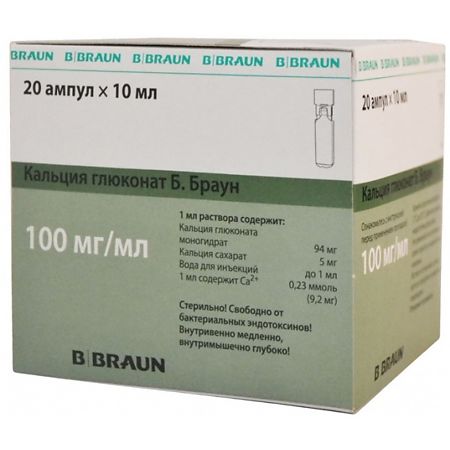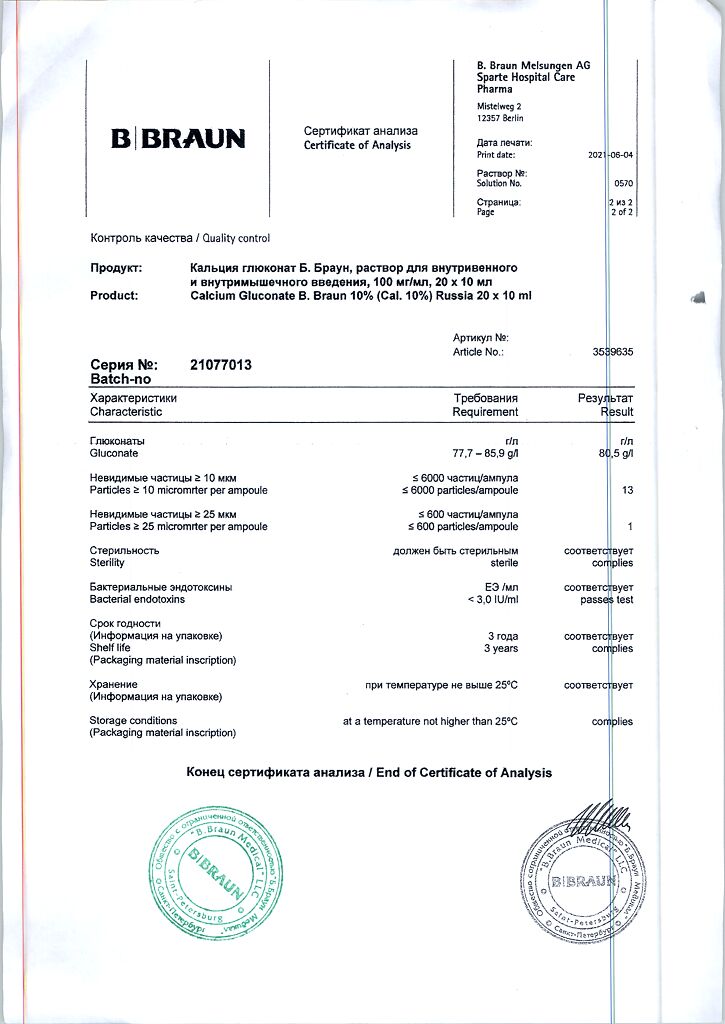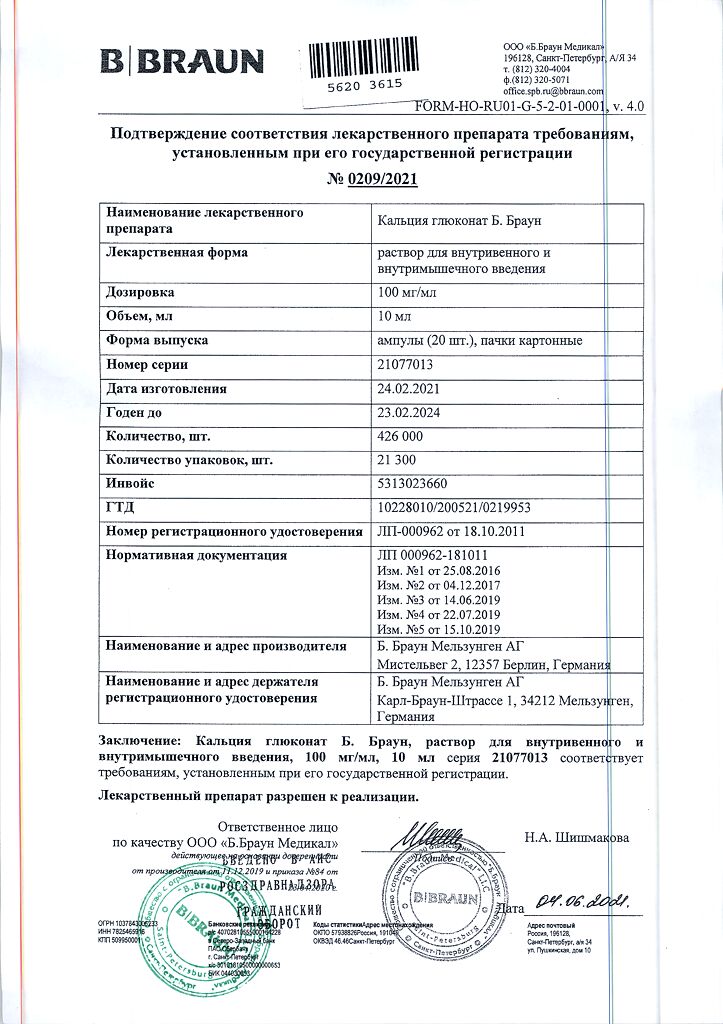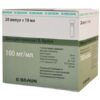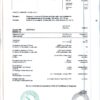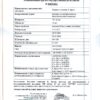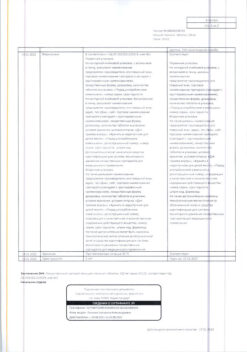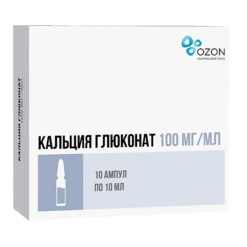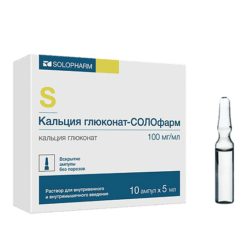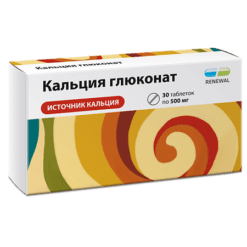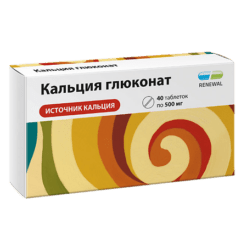No products in the cart.
Calcium gluconate B. Brown, 100 mg/ml 10 ml 20 pcs
€9.62 €8.01
Description
Pharmacodynamics
Calcium ions are involved in transmission of nerve impulses, contraction of smooth and transverse striated muscles, myocardial function, blood clotting; they are necessary for bone formation, functioning of other systems and organs.
The concentration of calcium ions in the blood decreases in many pathological processes; severe hypocalcemia contributes to tetany. Besides elimination of hypocalcaemia calcium compounds reduce vascular permeability and have anti-allergic, anti-inflammatory and haemostatic activity.
Pharmacokinetics
After parenteral administration the drug is evenly distributed in all tissues and organs. In blood plasma calcium is in ionized state. It passes through the placental barrier and is excreted into the breast milk. It is excreted from the body mainly by the kidneys.
Indications
Indications
Insufficiency of the function of the parathyroid glands, increased excretion of calcium from the body (particularly with prolonged dehydration),
as an adjuvant for allergic diseases (serum sickness, urticaria, angioedema) and allergic complications of drug therapy,
to reduce vascular permeability in pathological processes of various origins (exudative phase of the inflammatory process, hemorrhagic vasculitis, radiation sickness);
for parenchymal hepatitis, toxic liver damage, nephritis, eclampsia, hyperkalemia, hyperkalemic form of paroxysmal myoplegia, for skin diseases (skin itching, eczema, psoriasis),
as a hemostatic agent,
as an antidote for poisoning with magnesium salts, oxalic acid or its soluble salts, soluble fluoric acid salts.
Pharmacological effect
Pharmacological effect
Pharmacodynamics
Calcium ions take part in the transmission of nerve impulses, the contraction of smooth and striated muscles, the functioning of the myocardium, and blood clotting; they are necessary for the formation of bone tissue and the functioning of other systems and organs.
The concentration of calcium ions in the blood decreases in many pathological processes; Severe hypocalcemia contributes to the occurrence of tetany. In addition to eliminating hypocalcemia, calcium compounds reduce vascular permeability and have antiallergic, anti-inflammatory, and hemostatic effects.
Pharmacokinetics
After parenteral administration, the drug is evenly distributed in all tissues and organs. In blood plasma, calcium is in an ionized state. Passes through the placental barrier and is excreted into breast milk. It is excreted from the body mainly by the kidneys.
Special instructions
Special instructions
In patients with hypercalciuria, decreased glomerular filtration, or a history of nephrourolithiasis, the drug should be prescribed with caution and under monitoring of calcium levels in the urine.
To reduce the risk of developing nephrourolithiasis, it is recommended to ingest a sufficient amount of fluid.
Before filling the syringe with a solution of calcium gluconate, you must make sure that there are no traces of ethyl alcohol in it, because due to their interaction, calcium gluconate precipitates.
The ability to influence the speed of reactions when driving vehicles or working with other mechanisms. There are no references to the fact that Calcium gluconate can affect the speed of psychomotor reactions.
Calcium supplements should be used with caution in patients with heart disease or sarcoidosis. Careful monitoring of the amount of calcium in the blood and calcium excretion in the urine is necessary when prescribing high doses of the drug, especially in children. Treatment should be suspended if the level of calcium in the blood exceeds 2.625 – 2.75 mmol/l or if urinary calcium excretion exceeds 5 mg/kg. High intakes of vitamin D should be avoided during calcium therapy.
In patients with mild hypercalciuria, decreased glomerular filtration rate, or a history of nephrolithiasis, the drug should be administered with caution and under monitoring of calcium levels in the urine. To reduce the risk of developing nephrolithiasis, drinking plenty of fluids is recommended.
Active ingredient
Active ingredient
Calcium gluconate
Composition
Composition
1 ml of injection solution contains:
active ingredient:
calcium gluconate 10 mg
Pregnancy
Pregnancy
Pregnant women taking calcium supplements with vitamin D are at increased risk of developing hypercalcemia.
In recommended doses, taking calcium supplements does not cause any negative consequences for the fetus; use is also safe during breastfeeding.
Contraindications
Contraindications
Individual intolerance,
tendency to thrombosis,
hypercalcemia,
pronounced atherosclerosis,
increased blood clotting.
Side Effects
Side Effects
Sometimes nausea, vomiting, diarrhea, bradycardia, a feeling of heat in the mouth, and subsequently throughout the body, which quickly pass on their own, may be observed.
Interaction
Interaction
Calcium gluconate eliminates the inhibition of neuromuscular transmission after the use of antibiotics of a number of aminoglycosides. When used together with thiazide diuretics, it leads to the development of hypercalcemia.
During treatment with cardiac glycosides, parenteral use of the drug enhances the cardiotoxic effects of cardiac glycosides. When used simultaneously with phenigidine, calcium preparations weaken its effect. Calcium supplements increase the toxicity of quinidine.
Thiazide diuretics reduce urinary calcium excretion, which increases the risk of hypercalcemia.
Calcium supplements are contraindicated in patients receiving cardiac glycosides.
Calcium supplements can reduce the absorption of tetracycline drugs in the gastrointestinal tract; therefore, the interval between taking these drugs should be at least 3 hours.
Overdose
Overdose
Symptoms: Hypercalcemia may develop.
Treatment: Calcitonin is used as an antidote, which is administered intravenously at the rate of 5-10 IU per 1 kg of body weight per day (the drug is diluted in 500 ml of 0.9% sodium chloride solution, administered drip-wise over 6 hours in 2-4 doses).
Storage conditions
Storage conditions
In a place protected from moisture, at a temperature not exceeding 25ºС.
Shelf life
Shelf life
5 years
Manufacturer
Manufacturer
B. Braun Melsungen AG, Switzerland
Additional information
| Shelf life | 5 years |
|---|---|
| Conditions of storage | In a place protected from moisture, at a temperature not exceeding 25ºC. |
| Manufacturer | B. Braun Melsungen AG, Switzerland |
| Medication form | solution |
| Brand | B. Braun Melsungen AG |
Other forms…
Related products
Buy Calcium gluconate B. Brown, 100 mg/ml 10 ml 20 pcs with delivery to USA, UK, Europe and over 120 other countries.

